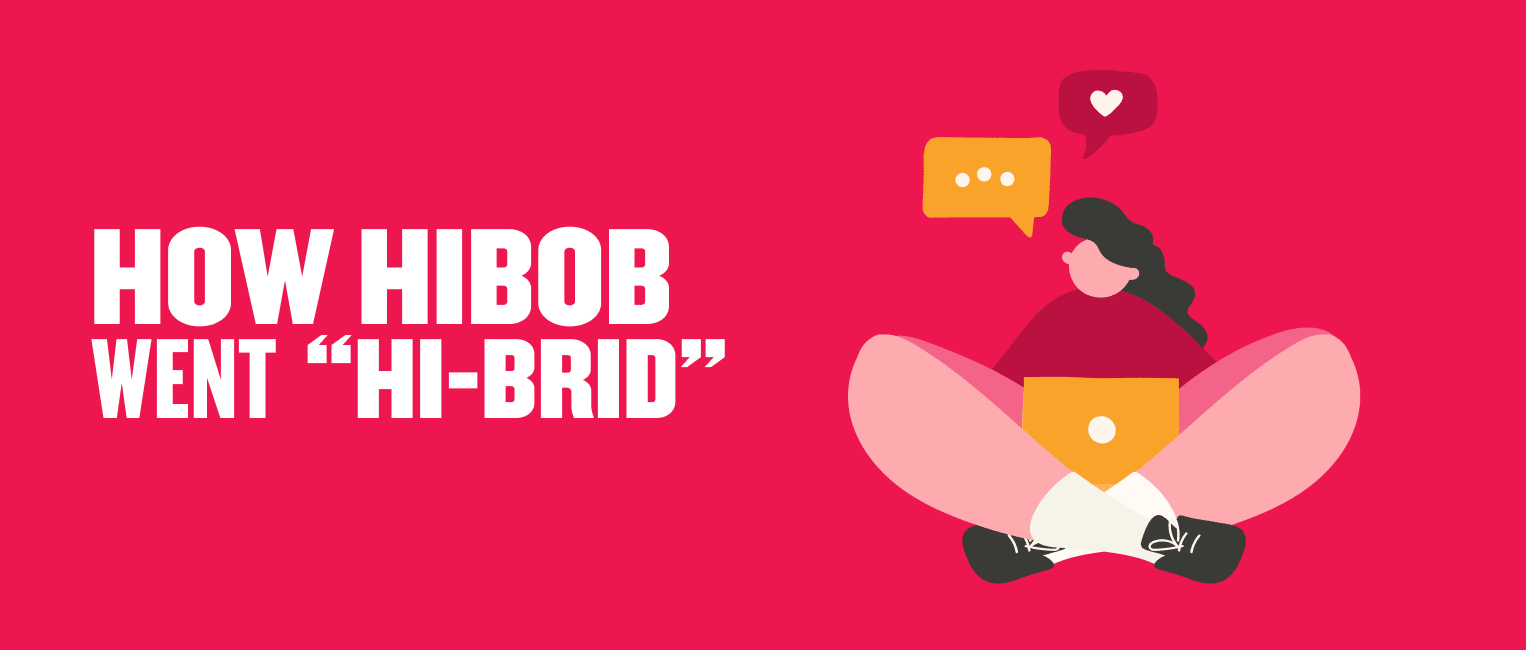HiBob research found that 56 percent of people felt productive working from home compared to 44 percent who reported the opposite. The same study also found that 62 percent of people find that hybrid work allows for a better work-life balance, and 36 percent say they’ll quit if companies force them to go back to the office full-time.
As the world began emerging from the toughest COVID restrictions, we knew we couldn’t go back to the old normal. In the end, we decided to offer our Bobbers flexibility and go permanently hybrid. Here’s why.
What our global Bobbers said
We have over 350 Bobbers in 11 countries with offices in Europe, the UK, Australia, Israel, and North America. Some people live near our offices and have the option to work from the office (WFO) regularly. We also have fully remote Bobbers.
We trusted all our Bobbers to work remotely from the beginning and found that this model works great. So, before we decided on anything, we talked to all of them. We built pulse surveys into Bob and asked Bobbers how they envisioned the future of our work model after COVID. We surveyed different regions separately, then collated the data. We were pleased to learn that the feedback was consistent.
Bobbers told us they loved the flexibility of working from home (WFH). This increased their focus and productivity. But they also missed WFO and collaborating with teammates face-to-face. This feedback enabled us to strike the right balance and highlight the best parts of WFH and WFO setups.
Building HiBob’s permanent global “Hi-brid” work model
We designed HiBob’s “Hi-brid” work model to highlight the values all Bobbers live by. The COVID lockdowns helped us facilitate and escalate our plans faster: Being forced to work 100 percent remotely made us think creatively about how to operate for the long term. The result? We had the infrastructure to nurture our unique DNA and great people experience, all while hiring and supporting more people everywhere. Our big challenge was implementing our new hybrid work model across the globe.
Structuring our “Hi-brid” model
The information from our pulse surveys helped us roll out our global “Hi-brid” baseline and ensure a feeling of continuity between different locations. To start, we asked Bobbers to work at least two days from the office, but we always stayed flexible to individuals’ needs and nuances that might arise between departments or sites. For example, each office needs to account for local COVID-19 guidelines, the demographic of each team, and unforeseen needs of the company.
Since reopening offices where COVID guidelines allow, we’ve implemented a WFO policy in the Bob platform so people can book their in-office days easily. This helps everyone keep track of who and how many people are WFO at any given time. It also helps us keep our Bobbers safe and healthy because we know who to contact if someone at the office tests positive for COVID.
Work from office, work from home…work from anywhere
Bobbers also told us they loved the idea of working from anywhere (WFA), so we built a WFA policy into our “Hi-brid” model, too. Any Bobber can work from anywhere in the world for up to two months with the approval of their manager.
“For me, intrinsic motivation to work hard, spearhead projects, and go the extra mile comes from being able to work flexibly, remotely, and collaboratively,” said Dessie Nedyalkova, a Strategic Project and Change Manager at HiBob, who chose to work from Óbidos, Portugal for two months. “HiBob’s culture certainly underpins the concept of ‘work is what you do, not where you are.'”
Team building and collaboration
With tons of new people joining every month, it’s vital to come into the office to meet, connect, and get to know each other in person where possible. To create routine and consistency in our weeks, we introduced “team days” to reduce uncertainty about who’s in the office and who’s not on which days.
Bobbers also choose at least one other day a week to WFO. This flexibility ensures everyone has the opportunity to connect and collaborate with people outside of their team and department.
When we asked for feedback from Bobbers on their experience working “Hi-brid,” Albin Olander, one of our Account Executives based in our UK office, said, “I really enjoy coming into the office to meet my close colleagues and to see people I normally wouldn’t interact with on other teams. Bob’s policy is flexible, and it’s important for me that the company encourages everyone to come in on the team days so we can meet in person.”
How our “Hi-brid” model helps build the HiBob team
Being hybrid helps build the fast-growing HiBob team, especially when candidates ask about our work structure. A hybrid work option shows candidates and current employees that we trust them and that trust is one of our guiding principles as a company. Having a hybrid work model also often sways their decisions on what company they choose to work for.
On the flip side, HiBob’s “Hi-brid” work model helps with retention. In the last two years, people’s values and circumstances have changed. Their expectations of employers have changed. People want to feel supported, listened to, and empowered at work. With the war for talent and so many open jobs, we want to champion how people work today and in the future.
Recommended For Further Reading
How to make your hybrid work model a success
Going hybrid long-term is difficult. It takes a lot of planning and ongoing maintenance. If you’re considering going hybrid, I recommend using these principles to guide you. They helped us roll out our “Hi-brid” plans and make them a continuing success:
- Work with leadership to determine what we value most as a business and how those values influence your work model.
- Make an effort to get feedback from your people to understand their expectations.
- Listen to your people. Incorporate feedback into a work structure that supports your people and champions what you value and need as an organization.
- Partner with every people manager to ensure everyone understands your plans and why you’ve structured them in a specific way.
- Support your people through periods of change and ensure they have access to the resources they need. For instance, we reintroduced back-to-the-office work gradually, and while we always encourage people to work face-to-face, Bobbers who feel uncomfortable coming to the office aren’t obligated to come in.
Throughout the process, keep listening to your people, be open to change, and keep an open feedback loop to address concerns and challenges as they come up. They definitely will!
My biggest takeaway from going “Hi-brid”
Going “Hi-brid” has been an incredible learning experience as an HR professional. It’s helped me understand the real value of communication and that communication goes both ways—listening to feedback and being transparent no matter what mediums you choose to use. My motto is “communicate, communicate, communicate!”
There’s no such thing as over-communication or trust, especially in this time of remote and hybrid work. Once you trust your employees and give them a safe work environment, the sky will be the limit. Always talk to your people, keep an open mind, and be flexible, particularly when discussing topics that force management to make positive changes to the organization. When your people are happy, the whole organization benefits from big upticks in productivity and retaining and attracting top talent.


